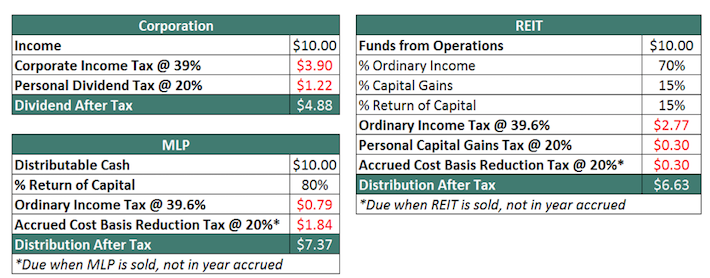
A market maker in the world of equity trading is a service that provides quotes on the sell and buy prices for a tradable asset. Their goal is to maximise their profit via the bid/ask spread. Here, we will explore the different types of market makers. There are many things you could do to begin your journey as market maker. We'll be discussing the primary market players, the market leaders, and the other market managers in this article.
Primary Market Maker
Before an announcement is made, the primary marketmaker must register in a security. The NASD has special criteria that must be met by a primary market maker. These criteria include time at the in-bound bid and ask, the ratio between the spread of the market maker and that of average dealers spread and 50% of market maker quotation updates with no trade execution. If the market maker does not meet these criteria, the Exchange could suspend their registration. This process can take several years.
A Primary Market maker is usually appointed for a particular option category on the Exchange. Each Primary Maker must agree to specific performance standards, such as minimum average quotation size or maximum quotation spread. Listed options are more liquid and are traded more frequently. The exchange will assign a Primary Market Maker based on these commitments. These rules include a variety of additional requirements. To meet these requirements, a primary market maker must act in a reasonable manner.

Competitive Market Maker
The term "competitive market maker" refers to a pre-designated market maker that precommits to provide more liquidity than endogenously chooses to achieve a desired level of efficiency. In the context of the NEEQ market, this concept impacts price efficiency in two ways. It reduces transaction costs and promotes efficient trading through reducing spread width. This informational cost refers to the social cost of completing trades. A competitive market maker can therefore reduce this informational cost while enhancing welfare.
A competitive market maker is able to beat a competitor's quote price within a certain range. Historically, a market maker would buy a stock from a retail customer at the inside bid and sell it at the same price as another market maker. The retail broker fulfilled their obligation to execute the best possible transaction. The inside Nasdaq quoted price is the price at which retail transactions were most common. The term "competitive Market Maker" has many advantages.
Secondary Market Maker
To trade on the exchange, a stock or option must be quoted by a market maker. The Market Maker must honor orders, and keep quotations updated in response to market movements. The Market Maker must price options contracts fairly. There must be no difference between the offer and bid price of more than $5. The Exchange could place additional restrictions on Market Makers activities. Its obligations include providing marketing support and maintaining a trade list.
Market makers have two main purposes. They keep the market running smoothly and ensure liquidity. These firms are essential for investors to unwind their positions. The Market Maker also buys securities from bondholders and ensures that company shares can be sold. Market makers in essence act as wholesalers within the financial market. Here's a list with active market makers in each industry:

Other MMs
Market makers play a crucial role in keeping the markets functioning. They purchase and sell bonds and stocks to keep the market functioning. How do you determine if your broker can also be a market maker, however? Here are some points to keep in mind when choosing a market-maker.
Some Market Makers may not be able to comply with their electronic quoting obligations. Certain Market Makers are not subject to quoting obligations in all markets. These are the SPX. If you fail to meet these requirements, the Exchange may suspend your account. This is especially relevant for market-makers that work on the floor. Because of their size, or lack thereof of infrastructure, some Market Makers might not be required to provide continuous electronic quotations. It could have an impact on your account's liquidity.
FAQ
What is the trading of securities?
The stock exchange is a place where investors can buy shares of companies in return for money. To raise capital, companies issue shares and then sell them to investors. Investors can then sell these shares back at the company if they feel the company is worth something.
The supply and demand factors determine the stock market price. If there are fewer buyers than vendors, the price will rise. However, if sellers are more numerous than buyers, the prices will drop.
There are two options for trading stocks.
-
Directly from the company
-
Through a broker
What is security?
Security is an asset that produces income for its owner. Shares in companies is the most common form of security.
Different types of securities can be issued by a company, including bonds, preferred stock, and common stock.
The earnings per share (EPS), and the dividends paid by the company determine the value of a share.
When you buy a share, you own part of the business and have a claim on future profits. You will receive money from the business if it pays dividends.
Your shares may be sold at anytime.
What is a Stock Exchange exactly?
Companies can sell shares on a stock exchange. This allows investors the opportunity to invest in the company. The price of the share is set by the market. It is typically determined by the willingness of people to pay for the shares.
Companies can also get money from investors via the stock exchange. Investors invest in companies to support their growth. They buy shares in the company. Companies use their money as capital to expand and fund their businesses.
Many types of shares can be listed on a stock exchange. Some of these shares are called ordinary shares. These are most common types of shares. Ordinary shares are bought and sold in the open market. The prices of shares are determined by demand and supply.
Preferred shares and debt security are two other types of shares. Preferred shares are given priority over other shares when dividends are paid. A company issue bonds called debt securities, which must be repaid.
How are shares prices determined?
Investors who seek a return for their investments set the share price. They want to make money from the company. They then buy shares at a specified price. If the share price goes up, then the investor makes more profit. The investor loses money if the share prices fall.
Investors are motivated to make as much as possible. This is why they invest in companies. It helps them to earn lots of money.
What's the difference between marketable and non-marketable securities?
The differences between non-marketable and marketable securities include lower liquidity, trading volumes, higher transaction costs, and lower trading volume. Marketable securities, however, can be traded on an exchange and offer greater liquidity and trading volume. You also get better price discovery since they trade all the time. There are exceptions to this rule. For example, some mutual funds are only open to institutional investors and therefore do not trade on public markets.
Marketable securities are more risky than non-marketable securities. They have lower yields and need higher initial capital deposits. Marketable securities are typically safer and easier to handle than nonmarketable ones.
For example, a bond issued by a large corporation has a much higher chance of repaying than a bond issued by a small business. The reason for this is that the former might have a strong balance, while those issued by smaller businesses may not.
Because they can make higher portfolio returns, investment companies prefer to hold marketable securities.
Statistics
- "If all of your money's in one stock, you could potentially lose 50% of it overnight," Moore says. (nerdwallet.com)
- Our focus on Main Street investors reflects the fact that American households own $38 trillion worth of equities, more than 59 percent of the U.S. equity market either directly or indirectly through mutual funds, retirement accounts, and other investments. (sec.gov)
- For instance, an individual or entity that owns 100,000 shares of a company with one million outstanding shares would have a 10% ownership stake. (investopedia.com)
- Ratchet down that 10% if you don't yet have a healthy emergency fund and 10% to 15% of your income funneled into a retirement savings account. (nerdwallet.com)
External Links
How To
How to Trade in Stock Market
Stock trading involves the purchase and sale of stocks, bonds, commodities or currencies as well as derivatives. The word "trading" comes from the French term traiteur (someone who buys and sells). Traders purchase and sell securities in order make money from the difference between what is paid and what they get. It is one of the oldest forms of financial investment.
There are many ways to invest in the stock market. There are three basic types: active, passive and hybrid. Passive investors only watch their investments grow. Actively traded investors seek out winning companies and make money from them. Hybrids combine the best of both approaches.
Passive investing involves index funds that track broad indicators such as the Dow Jones Industrial Average and S&P 500. This method is popular as it offers diversification and minimizes risk. You can just relax and let your investments do the work.
Active investing is about picking specific companies to analyze their performance. Active investors will look at things such as earnings growth, return on equity, debt ratios, P/E ratio, cash flow, book value, dividend payout, management team, share price history, etc. Then they decide whether to purchase shares in the company or not. If they feel that the company is undervalued, they will buy shares and hope that the price goes up. On the other side, if the company is valued too high, they will wait until it drops before buying shares.
Hybrid investments combine elements of both passive as active investing. You might choose a fund that tracks multiple stocks but also wish to pick several companies. In this case, you would put part of your portfolio into a passively managed fund and another part into a collection of actively managed funds.